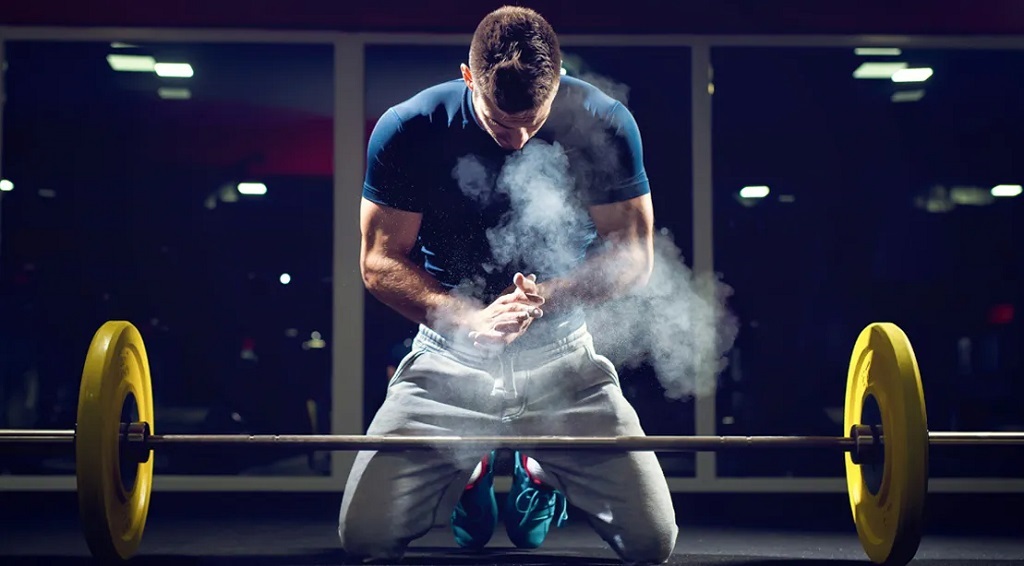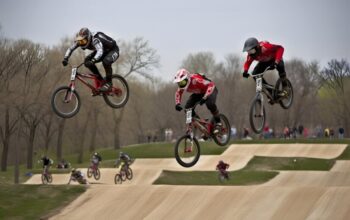Ever watch a professional athlete and marvel at their seemingly superhuman abilities? Their agility, strength, and endurance are the result of years of dedicated training that goes far beyond simply running laps or lifting weights. But the good news is, you can incorporate elements of their training philosophies into your workouts, regardless of your fitness level.
This guide delves into the training secrets of top athletes from various sports, offering workout inspiration you can adapt to your own goals.
Understanding the Athlete: Training Specificity
Before diving in, it’s crucial to understand “training specificity.” An athlete’s training program is designed to optimize their performance for their specific sport. A marathoner’s training will differ vastly from a weightlifter’s. Therefore, the goal isn’t to replicate their entire routines but to adapt principles and exercises that translate well to their own fitness goals.
From the Track to Your Treadmill: Cardio Inspiration
Elite endurance athletes like distance runners and cyclists prioritize building a strong aerobic base. Here’s how to incorporate their training principles:
- Interval Training: Challenge your cardiovascular system with intervals of high-intensity effort followed by periods of rest or recovery. This can be done on the treadmill, bike, or even with bodyweight exercises like jumping jacks or burpees.
- Long Distance Sessions: Schedule long, slow-distance runs or cycles to build endurance. These sessions improve your body’s ability to utilize oxygen efficiently.
- Fartlek Training: “Fartlek” translates to “speed play” in Swedish. This involves varying your pace throughout your workout, mimicking the surges and recoveries experienced in running competitions.
Strength and Power: Borrowing from Weightlifters and Boxers
Strength and power are crucial for athletes in sports like weightlifting, boxing, and football. Here are some elements you can incorporate:
- Compound Lifts: Focus on compound exercises that work for multiple muscle groups simultaneously. Think squats, deadlifts, lunges, push-ups, and rows. These build overall strength and power.
- Plyometric Exercises: Plyometrics involve explosive movements that train your muscles to generate power quickly. Exercises like jump squats, box jumps, and depth jumps can be incorporated into your routine.
- Olympic Lifts: The snatch and clean and jerk are complex Olympic lifts used by weightlifters. While mastering them requires proper coaching, consider variations like power cleans or hang cleans that offer similar benefits without the technical complexity.
Agility and Coordination: Inspired by Soccer Players and Basketball Players
Soccer players and basketball players rely heavily on agility and coordination to navigate the field and court. Here are some training ideas to borrow:
- Lateral Movements: Lateral lunges, shuffles, and carioca drills challenge your ability to move side-to-side efficiently.
- Ladder Drills: Agility ladders provide a platform for footwork drills that improve coordination and quick changes of direction.
- Plyometric Exercises (adapted): Bodyweight plyometric exercises like box jumps or jumping lunges can be adapted to incorporate agility drills. Jump from side to side onto a box, or lunge explosively forward and back.
The Weekend Warrior Workout: Putting it All Together
Here’s a sample workout that incorporates elements from various sports, catering to a general fitness enthusiast:
Warm-Up (10 minutes): Light cardio like jogging or jumping jacks followed by dynamic stretches.
Strength and Power (30 minutes):
- Squats: 3 sets of 8-12 repetitions
- Push-ups: 3 sets of as many repetitions as possible (AMRAP)
- Rows (using dumbbells or resistance bands): 3 sets of 10-15 repetitions
- Box Jumps (optional, adapt with squat jumps if needed): 3 sets of 5 repetitions
Cardio and Agility (20 minutes):
- Interval training on a treadmill or stationary bike: Alternate between 30 seconds of high intensity followed by 60 seconds of recovery for 10 minutes.
- Lateral lunges with overhead reach: 3 sets of 10 repetitions per leg
- Ladder drill: Perform various footwork drills like in-and-out shuffles or high knees for 2 minutes.
Cool-Down (10 minutes): Static stretches targeting major muscle groups used throughout the workout.
Adapting the Workout:
This is just a sample. Adjust the exercises, intensity, and duration to match your fitness level and goals. For beginners, start with lower weights or bodyweight exercises and gradually increase the challenge.
Remember: Listen to your body, take rest days, and consult a doctor before starting any new exercise program.
Beyond the Workout: The Champion Mindset
Elite athletes aren’t just physically gifted; they possess a champion mindset characterized by:
- Dedication and Discipline: Success requires consistent effort and the ability to push through challenges.
- Goal Setting: Having clear, achievable goals keeps you motivated and focused.
- Mental Toughness: Developing mental resilience helps you overcome setbacks and maintain focus under pressure.
- Positive Self-Talk: Challenge negative thoughts and replace them with affirmations that empower you.
- Importance of Recovery: Prioritize sleep, proper nutrition, and rest days to allow your body to recover and rebuild.
Finding Inspiration: The Power of Role Models
Watching top athletes compete can be a powerful source of motivation. Use their work ethic, perseverance, and dedication to inspire your training.
Focus on Your “Why”: Intrinsic Motivation
While admiring elite athletes is great, the key is to find your intrinsic motivation for exercise. Is it for overall health and well-being? To improve performance in a specific sport? Knowing your “why” fuels your desire to train consistently.

Building a Sustainable Routine:
Creating a sustainable workout routine is key to long-term success. Here are some tips:
- Find Activities You Enjoy: Choose activities you find fun and engaging. This makes it more likely you’ll stick with them in the long run.
- Mix Up Your Workouts: Incorporate variety into your routine to prevent plateaus and keep things interesting.
- Schedule Workouts: Treat your workouts like important appointments. Scheduling them in your calendar increases the likelihood you’ll follow through.
- Find a Workout Buddy: Training with a friend or joining a group fitness class can add accountability and social interaction.
Related: Five Most Popular Sports in the US
The Takeaway: Train Smart, Train Inspired
While you may not be aiming for the Olympics, you can incorporate elements of elite athlete training into your workouts. By understanding training principles, adapting exercises, and adopting a champion mindset, you can achieve your fitness goals and experience the joy of moving your body. Remember, consistency, dedication, and a healthy dose of inspiration are the keys to unlocking your athletic potential. So lace up your shoes, find your motivation, and get ready to train like your favorite athlete!








